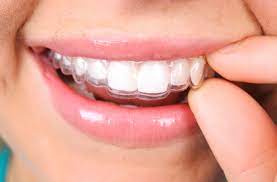While both orthodontists and dentists care for your oral health, their roles, training, and specialties differ significantly. If you're wondering, "How is an orthodontist different from a dentist?", the key lies in their area of focus. A dentist handles general oral hygiene, such as cleanings, fillings, and preventive care, whereas an Orthodontists in Dubai specializes in correcting teeth and jaw alignment using braces, aligners, and other devices. Understanding the difference can help you choose the right professional for your dental needs.
Education and Training:
The educational paths of dentists and orthodontists begin the same but diverge after dental school. Both complete a bachelor's degree followed by four years at an accredited dental school. After earning a DDS (Doctor of Dental Surgery) or DMD (Doctor of Dental Medicine), dentists can begin practicing general dentistry. Orthodontists, however, must complete an additional two to three years of specialized training in orthodontics.
- Dentists: 8 years of education (including dental school)
- Orthodontists: 10–11 years, including residency and specialization
- Orthodontic training includes jaw alignment, growth patterns, and biomechanics
- Fewer than 10% of dentists become orthodontists
Scope of Practice:
Dentists provide a wide range of services related to general oral health, focusing on preventing and treating issues like cavities, gum disease, and oral infections. Orthodontists focus specifically on the alignment of teeth and jaws. They do not fill cavities or perform cleanings but instead design and oversee treatments like braces and Invisalign to correct malocclusions (bad bites).
What a dentist typically does:
- Dental exams and cleanings
- Tooth fillings and crowns
- Root canals and extractions
- Gum disease treatment
- Oral health education
What an orthodontist specializes in:
- Diagnosing bite and alignment issues
- Designing and applying braces or aligners
- Monitoring jaw development in children
- Retainers and post-treatment care
- Correcting overbites, underbites, and crossbites
Tools and Treatments Used:
Orthodontists and dentists use different tools depending on their areas of focus. While both may use X-rays and dental charts, orthodontists use more specialized equipment to plan and execute alignment treatments. Their focus is on moving teeth safely over time, which requires precision tools and custom appliances.
- Dentists use hand instruments, ultrasonic scalers, and drills for cleanings and restorations
- Orthodontists use brackets, wires, aligners, retainers, and expanders
- 3D imaging and digital scanning are commonly used in orthodontic practices
- Orthodontic treatment plans often include stages and regular adjustments
When Should You See a Dentist vs. an Orthodontist?
Knowing when to visit each professional can save time and ensure you receive the right care. Dentists are your go-to for regular oral health maintenance, while orthodontists are referred to when there's a problem with tooth alignment or jaw development. In many cases, your dentist will be the one to recommend a visit to the orthodontist.
See a dentist if you need:
- Routine check-ups and cleanings
- Fillings or crowns
- Tooth pain diagnosis
- Oral hygiene support
- Gum treatment
See an orthodontist if you notice:
- Crooked or crowded teeth
- Gaps between teeth
- Difficulty biting or chewing
- Jaw pain or popping
- Early or late loss of baby teeth in children
Collaborative Patient Care:
Dentists and orthodontists often work together to ensure comprehensive oral care. A dentist might detect early signs of bite issues and refer a patient to an orthodontist. Conversely, an orthodontist may ask a dentist to complete cleanings or restorative work before braces are placed. This collaborative approach ensures that both alignment and dental health are addressed holistically.
- Dentists maintain oral health during orthodontic treatment
- Orthodontists ensure alignment without compromising dental integrity
- Regular dental visits are still needed while undergoing orthodontic care
- Communication between providers improves treatment outcomes
Choosing the Right Provider for Your Needs:
Ultimately, the difference between a dentist and an Orthodontists comes down to their specialty. If your primary concern is tooth alignment, it's best to see an orthodontist for expert guidance and treatment. However, for cleanings, fillings, and general oral care, a dentist is the right choice. Understanding how an orthodontist is different from a dentist empowers you to make better decisions about your oral health and ensures that you're receiving the best care for your specific needs.
Whether you’re looking to improve your smile with braces or need a routine dental check-up, knowing which professional to consult will streamline your path to a healthier, more confident smile.





Comments